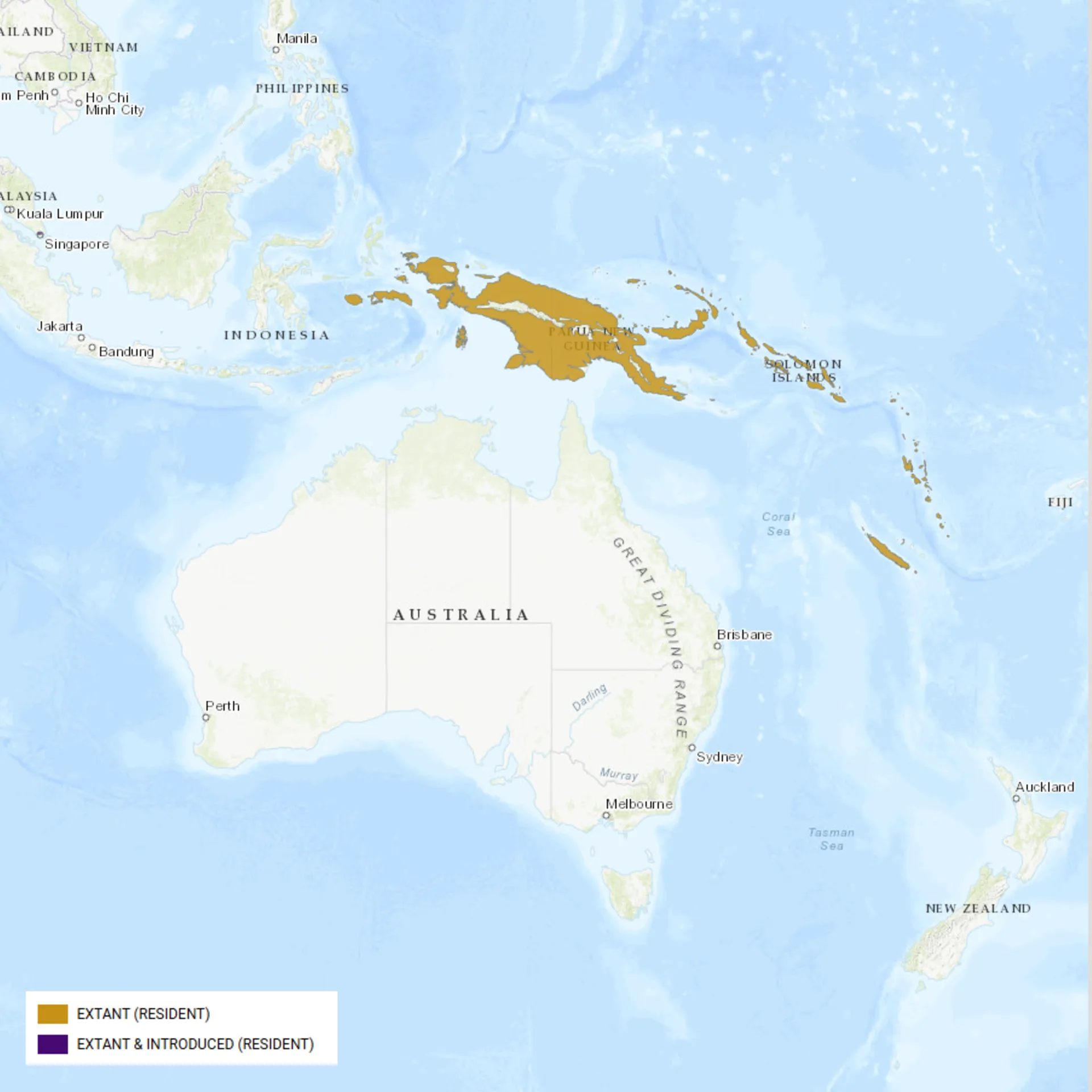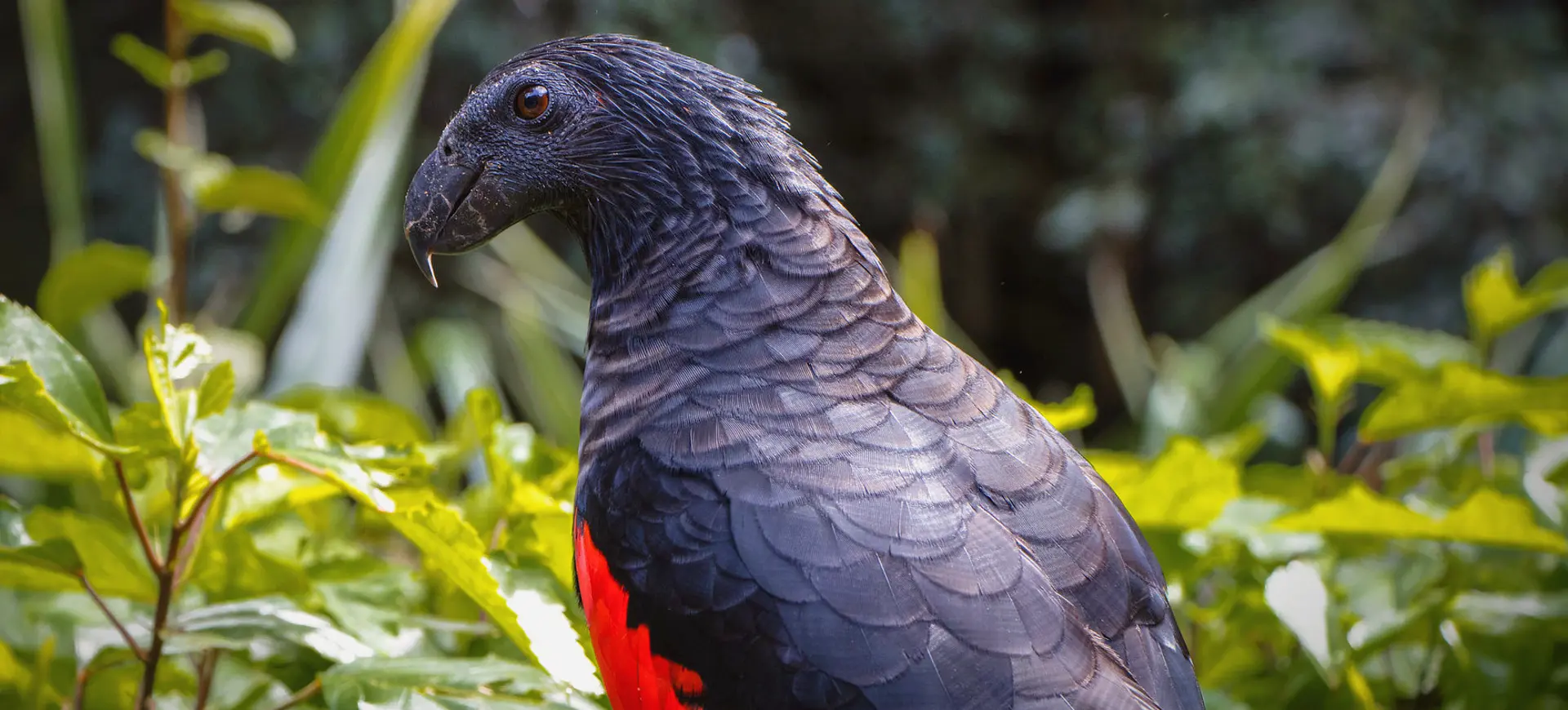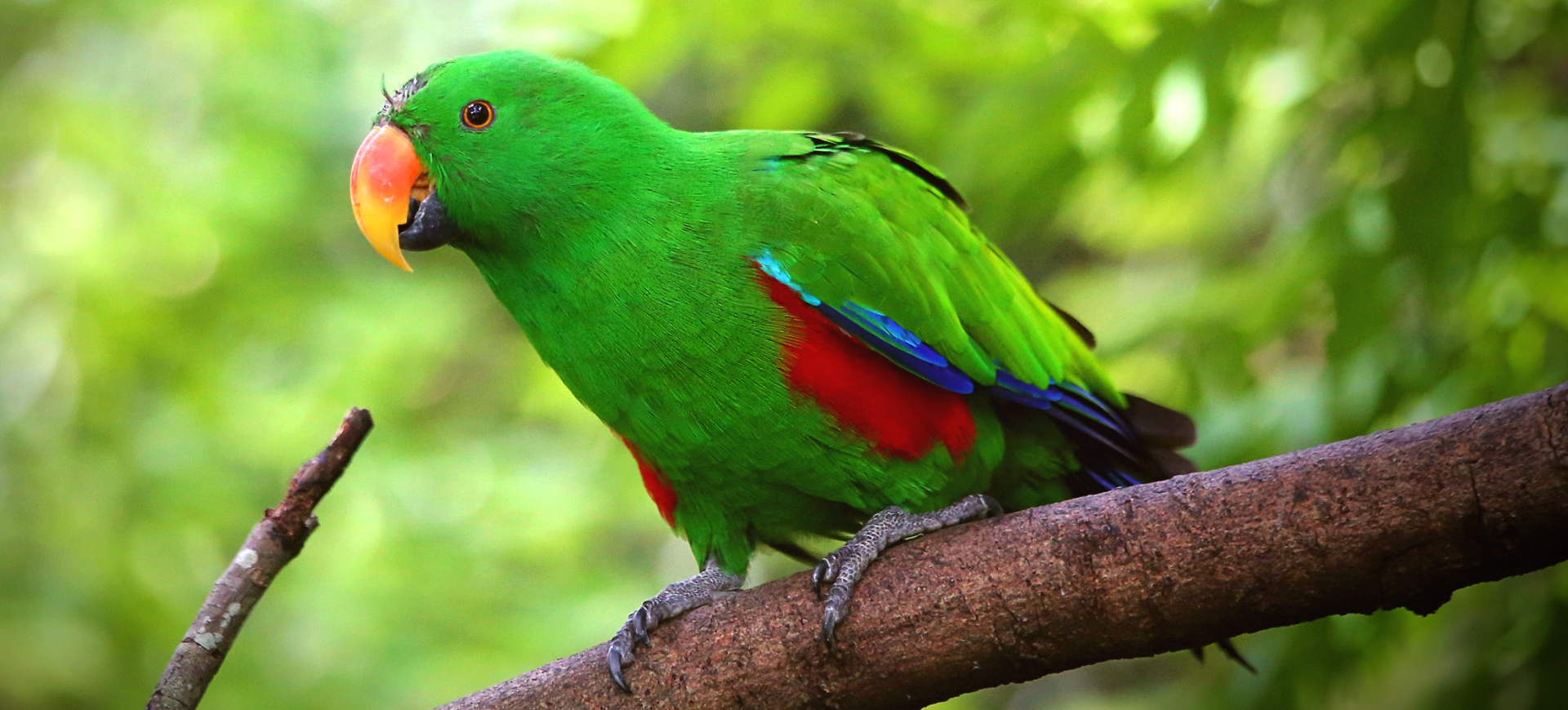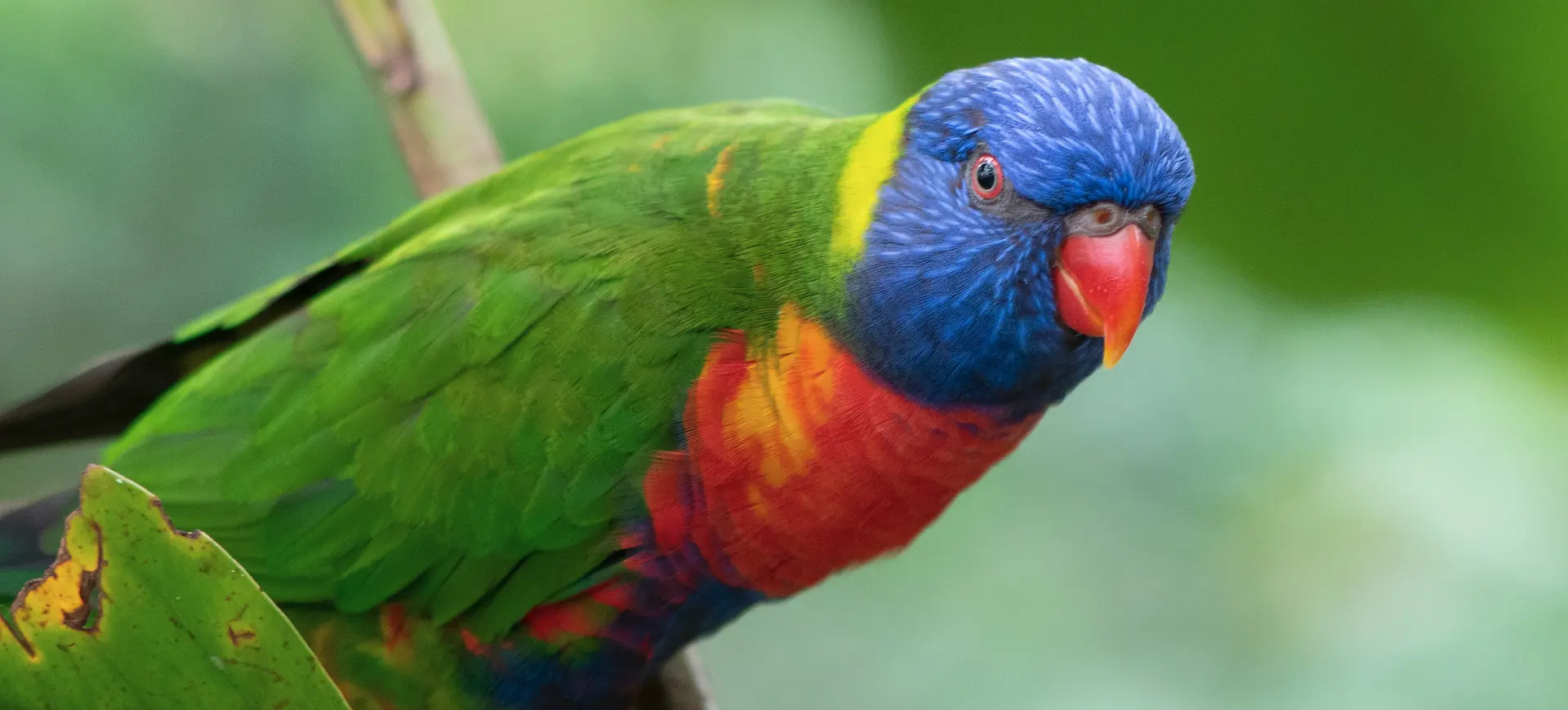Overview
The Coconut Lorikeet is a vividly colored parrot species known for its specialized brush-tipped tongue, which feeds on nectar and pollen. It is native to many Australasian and Pacific islands, occupying forests, plantations, and coastal habitats. Its bright plumage, consisting of green, blue, red, yellow, and orange hues, makes it easily recognizable in flight and while foraging. This species is highly social and vocal, often moving in flocks and displaying complex group interactions.
The Coconut Lorikeet exhibits strong flight capabilities, which enable it to travel long distances between feeding areas and roosting sites. It frequently engages in acrobatic feeding behaviors, hanging upside down to access flowers and fruit. Although it primarily feeds on nectar and pollen, it supplements its diet with soft fruits, seeds, and occasionally insects. This species is a key ecological pollinator, especially for native flowering plants.
This lorikeet is considered to be among the most widespread species of the genus Trichoglossus, with several recognized subspecies adapted to specific island regions. Its adaptability to modified habitats such as coconut plantations and gardens has contributed to its stable population status in many areas. However, in some regions, it faces pressures from habitat loss and the pet trade. Due to overlapping ranges and similar coloration, it is often confused with the Rainbow Lorikeet, though taxonomic revisions now separate them.
Taxonomy
Kingdom
Phylum
Class
Order
Family
Genus
Species
Type
Current distribution:
The Coconut Lorikeet is native to parts of Indonesia, Papua New Guinea, the Solomon Islands, Vanuatu, and New Caledonia. It has a wide but fragmented distribution across many Pacific islands, with populations on both large islands and smaller atolls. Subspecies are localized to specific island groups and exhibit slight differences in size and coloration. Although it was formerly grouped with the Rainbow Lorikeet of Australia, current taxonomy treats them as separate species.
The species has been introduced to some non-native areas but has not shown strong invasive tendencies. It remains abundant and highly visible in parts of its range, often forming large flocks that move across landscapes in search of food. The availability of flowering plants strongly influences their distribution, and populations may shift seasonally. Local declines have been observed in areas with high habitat loss or where trapping for the pet trade persists.
Physical Description:
The Coconut Lorikeet displays a striking array of colors, including a green back and wings, a deep blue head, red-orange breast, and yellow-green thighs and undertail coverts. The upper breast is often tinged with yellow or orange, and the belly can vary from dark blue to black depending on the subspecies. It has a bright red or orange beak and a yellow iris that stands out against its darker facial feathers. The tail is green with a slight graduation and some yellow edging underneath.
Males and females appear nearly identical in plumage, with little sexual dimorphism, though males are often slightly larger. Juveniles are duller in coloration with a black beak and brown irises, gaining adult coloration as they mature. The specialized brush-tipped tongue efficiently extracts nectar and pollen from flowers. Their strong feet and curved claws grip branches securely while feeding or climbing.

Lifespan: Wild: ~20 Years || Captivity: ~25 Years

Weight: Male: 3.8-5.5 oz (108-156 g) || Female: 3.5-4.8 oz (99-136 g)

Length: Male: 10.6–11.8 in (27–30 cm) || Female: 9.8–11 in (25–28 cm)

Wingspan: Male & Female: 5.9–6.7 in (15–17 cm)

Top Speed: 31 mph (50 km/h) in flight
Characteristic:
Native Habitat:
Coconut Lorikeets are found in tropical lowland and montane forests, including primary and secondary forests, coastal woodlands, and mangrove edges. They are also common in anthropogenic environments such as plantations, parks, and gardens, especially those with abundant flowering trees. Nesting typically occurs in tree cavities, often in tall trees near feeding areas or water sources. The species prefers habitats with a high density of nectar-producing plants.
They are well adapted to seasonal changes in flower availability and may travel long distances to find suitable feeding grounds. In island environments, they vary in habitat preference, with certain subspecies inhabiting drier or more coastal areas. Their presence is often a reliable indicator of flowering activity within a habitat. Deforestation and changes in land use can reduce suitable nesting and feeding sites, impacting local populations.
Climate Zones:
Biomes:
Biogeographical Realms:
Countries:
Diet:
Diet & Feeding Habits:
The Coconut Lorikeet is primarily nectarivorous, feeding on nectar and pollen from flowering trees such as eucalyptus, coconut palms, and hibiscus. Its brush-tipped tongue is adapted to lap up liquid food efficiently, a trait shared among all lorikeets. In addition to nectar, it also consumes soft fruits like papaya, banana, and figs, seeds, and occasional insects. Foraging often occurs in noisy flocks that move rapidly between flowering trees.
Feeding is a highly social activity, and the birds often share feeding sites with other lorikeet species and nectar-feeding birds. They play an essential ecological role as pollinators, transferring pollen between flowers during feeding. In agricultural regions, they sometimes feed on cultivated fruits, leading to conflict with farmers. They require a specialized liquid diet low in iron and rich in nectar-replacement formulas in captivity.
Mating Behavior:
Mating Description:
Coconut Lorikeets form monogamous pairs that maintain long-term bonds, often remaining together for multiple breeding seasons. Courtship includes mutual preening, synchronized movements, and vocalizations, strengthening pair bonding. Nesting usually occurs in natural tree cavities or hollow limbs, sometimes at considerable height above the ground. The female lays 1–3 eggs, which are incubated primarily by her while the male assists by guarding the nest and providing food.
Breeding may occur throughout the year in regions with consistent food availability, but is often seasonal in others, peaking during floral abundance. Incubation lasts approximately 23–25 days, and the chicks fledge after about 7–8 weeks. Both parents participate in feeding the chicks, regurgitating nectar and soft fruits. After fledging, juveniles remain with the parents for a period before joining larger flocks.
Reproduction Season:
Birth Type:
Pregnancy Duration:
Female Name:
Male Name:
Baby Name:
Social Structure Description:
Coconut Lorikeets are highly social birds that form flocks ranging from small groups to large aggregations of several dozen individuals. Flocks exhibit strong cohesion, moving together during daily foraging and roosting activities. Stable pair bonds are maintained within these groups, and individuals engage in mutual grooming and vocal exchanges. Social hierarchy is not rigidly defined, but dominant individuals may gain priority access to food sources.
They are diurnal, with peak activity occurring in the early morning and late afternoon when flowers are most productive. Roosting is communal, often in tall trees where they gather in large, noisy groups. Social communication includes various calls and body language to coordinate movement and reinforce pair bonds. Juveniles learn social behaviors through interaction within the flock and parental guidance.
Groups:
Conservation Status:
Population Trend:
The Coconut Lorikeet remains widespread and relatively abundant across its native range, with stable or increasing populations in many areas. Its adaptability to modified environments, including plantations and gardens, has helped maintain numbers even where forests have been partially cleared. Subspecies on smaller islands may have more restricted ranges and be more susceptible to habitat disruption. Despite being locally trapped for the pet trade, these pressures have not significantly impacted global population levels.
In some regions, particularly remote islands, data on population numbers is limited, and localized monitoring is recommended. Conservation assessments suggest that while the overall species is secure, certain island subspecies may require closer attention. Urban development, agriculture, and invasive predators can threaten specific nesting and feeding habitats. Regional conservation programs and monitoring are important to ensure long-term stability.
Population Threats:
Habitat loss due to deforestation and agricultural conversion is the primary threat to Coconut Lorikeet populations, especially in less protected island environments. Logging and land clearing reduce the availability of suitable nesting sites and flowering trees. In some regions, trapping for the pet trade persists, though its impact is generally localized. Introduced predators such as rats and cats may prey on eggs and chicks, especially in areas lacking native mammalian predators.
Pesticide use and pollution in agricultural areas may indirectly affect food sources and reproductive success. On islands where coconut plantations dominate, reliance on monocultures may limit dietary diversity and lead to nutritional stress. Disease transmission from escaped or introduced captive birds is an emerging concern in some populations. Human disturbance at nesting sites may also cause abandonment and reduced breeding success.
Conservation Efforts:
The Coconut Lorikeet is in several protected areas and national parks across its native range, providing population security. Community-based conservation programs have been established on some islands to monitor populations and promote habitat protection. In regions with ongoing pet trade pressure, awareness campaigns emphasize the importance of keeping wild birds in their natural habitats. Captive breeding programs exist primarily for aviculture rather than conservation, but these contribute to the species’ availability outside the wild.
Conservation actions focus on habitat preservation, especially maintaining flowering tree diversity and natural nest sites. Restoration of degraded habitats and reforestation projects benefit the lorikeet and other forest-dependent species. Trade regulation under CITES Appendix II provides a mechanism for controlling international commerce. Continued monitoring and research on subspecies status are needed to guide future conservation strategies.
Additional Resources:
Fun Facts
- Coconut Lorikeets have a specialized tongue adapted for nectar feeding, allowing them to play a crucial role in pollination.
- They can mimic sounds, including human speech when kept in captivity.
- The vibrant colors of their plumage provide excellent camouflage among the brightly colored flowers and foliage of their habitat.
- These birds exhibit high agility and can perform acrobatic maneuvers during flight.
- Coconut Lorikeets are known for their strong pair bonds, often remaining with the same partner for life.
- They contribute to the ecosystem by acting as pollinators and seed dispersers, aiding in the regeneration of their habitats.
- In some cultures, Coconut Lorikeets symbolize love and happiness due to their colorful appearance and monogamous nature.
- Despite their small size, they have a loud and distinctive call, which can be heard over long distances.
- Coconut Lorikeets are highly adaptable and thrive in various habitats, including human-altered landscapes.
- Conservation efforts for these birds focus on habitat protection, legal protection from trade, and public education to ensure their survival.












